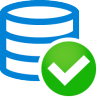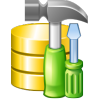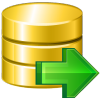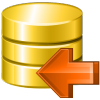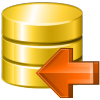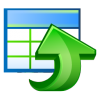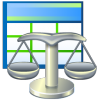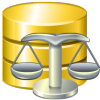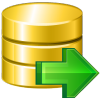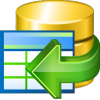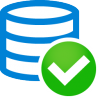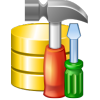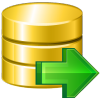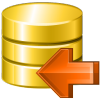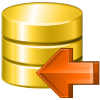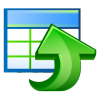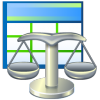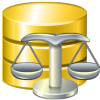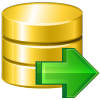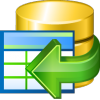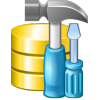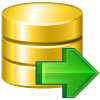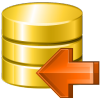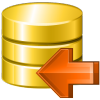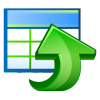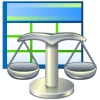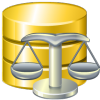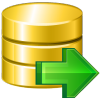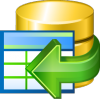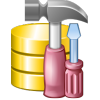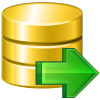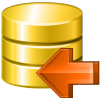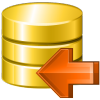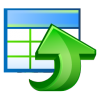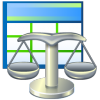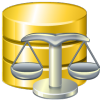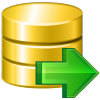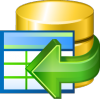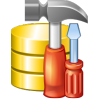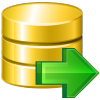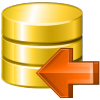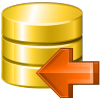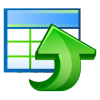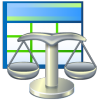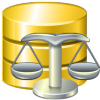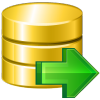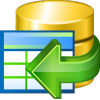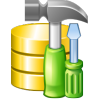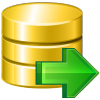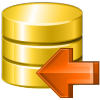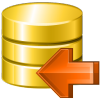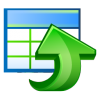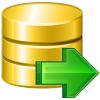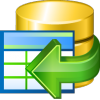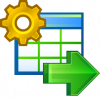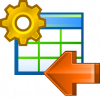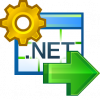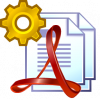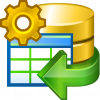About STUDIO
EMS SQL Management Studio is a complete solution for database administration and development. The STUDIO is an integrated suite of powerful database management tools united in one easy-to-use work environment. Developers will appreciate its ability to create/edit/drop any database objects and will find DB comparison, data export/import and test data generation tools extremely helpful. Database migration, BackUp and Restore tools will be of great help to DBAs. As will be the Scheduler that will automate a sizeable part of DBA's work.
In order to start working with the STUDIO you need to download the installation package here. Then run the installaton file on a MS Windows workstation. When the installation is finished, the program is ready to be used in the trial mode. You can evaluate the trial version for 30 days.This is the time for you to make a purchasing decision. You can purchase the STUDIO here. After the payment is complete your will receive your registration information by e-mail. On entering this information (Main Menu/Help/Register) your copy of the STUDIO will become a registered one.
Basically, there are two upgrading options:
1) You should either download the complete Studio package anew and install it on the same workstation as your original version, which will be overwritten. All settings will be saved.
2) Or, you should update SQL Studio components through SQL Studio Direct service (Navigate/SQL Studio Direct main menu item). A pop-up window will tell you about available updates. Click Yes to download these updates (Internet connection is a must). The Refresh icon on SQL Studio Direct toolbar serves the same purpose. You can also set the interval for Automatic polling of the network in search of updates (see the corresponding icon).
The update procedure performed either way will not require any additional registration.
There is a third possibility for updating SQL Manager component only. You can download the Studio edition of the tool from the corresponding SQL Manager download page. You would then need to unpack the archive in the SQL Manager subfolder within SQL Studio installation directory (e.g. C:\Program Files\EMS\SQL Studio for InterBase & Firebird\SQL Manager).
DB registration and connection
The single registered database repository allows one database to be accessed with any STUDIO tools. If you earlier purchased our product suites (bundles) you had to enter the database information in every tool you used. That eventually led to massive time wasting and typing errors. Now the problem is solved in the STUDIO with the help of a single registered database repository.
Using our products you can work with InterBase and Firebird servers located in the local network or remotely on any platform (Linux, Unix, Windows, etc.). You can also connect to remote InterBase/Firebird servers using SSH tunneling.
SSH (Secure Shell Host) protocol is used to heighten the computer security when working with Unix systems in Internet. SSH uses several encryption algorithms of different reliability. The spread of the SSH is also connected with the fact that a number of Linux-like OS's (for example FreeBSD) include SSH server in their standard integration. To get more information about this issue, please, visit https://www.openssh.com/. SSH tunneling feature of SQL Manager is a means for secure connection to InterBase/Firebird servers when working over insecure connection channels. You can also use SSH tunnel to get access to the remote InterBase/Firebird servers, when port 3050 is closed for external connections due to some reasons. The connection over SSH tunnel works in the following way. First a connection is established and authentication between SSH client built in SQL Manager and remote InterBase/Firebird server is performed. Then all in and outgoing information between the program and InterBase/Firebird server is transmitted through SSH server with the help of communication port (usually it is 22), and SSH server transfers this information directly to InterBase/Firebird server. To register a database to which one connects through SSH tunnel, you should set the following parameters in Database Registration Wizard of SQL Manager for InterBase/Firebird:
On the first step:
Host is a host where InterBase/Firebird server is located in point of view SSH server. If SSH and InterBase/Firebird server are on the same machine, it is equal to SSH Host, or may be 'localhost'.
Port is a port of InterBase/Firebird server on Remote Host, by default it is 3050.
User Name is a InterBase/Firebird user name.
Password is password of the InterBase/Firebird user.
Please, note that InterBase/Firebird host name should be set relatively to the SSH server in this case. For example, if both of InterBase/Firebird and SSH servers are located on the same computer, you should specify localhost as Host name instead of server's external host name or IP address.
Please, do not forget to choose Use tunneling and SSH tunneling
On the second step:
SSH host name is a host where SSH server is activated.
SSH port is a port where SSH server is activated.
SSH user name is a user on Linux machine. (It is a Linux user. It is not a user of InterBase/Firebird server.)
SSH password is a Linux user password.
If due to the security policy accepted in your corporate network or by your host provider you cannot connect to your InterBase/Firebird server directly through TCP/IP (for example a firewall prevents this), you can use SSH tunneling feature of SQL Manager to fulfill your task.
If the error message says "Your user name and password are not defined. Ask your database administrator to set up a Firebird login. SQL Code: -902 IB Error Number: 335544472", then the reason is that the user doesn't have permission to access the database. You should register the user with the proper login and password on your server.
To setup SSH connection correctly, input the following values to the corresponding fields:
On SSH page/tab:
SSH host name is a host where SSH server is activated.
SSH port is a port where SSH server is activated.
SSH user name is a user on Linux machine. (It is a Linux user. It is not a user of InterBase/Firebird server.)
SSH password is a Linux user password.
On Connection properties/General page/tab:
Host is a host where InterBase/Firebird server is located from the point of view of SSH server. If SSH and InterBase/Firebird server are on the same machine, it is equal to SSH Host, or may be 'localhost'.
Port is a port of InterBase/Firebird server on Remote Host, by default it is 3050.
User Name is a InterBase/Firebird user name.
Password is a password of the InterBase/Firebird user.
Please note that InterBase/Firebird host name should be set relatively to the SSH server in this case. For example, if both InterBase/Firebird and SSH servers are located on the same computer, you should specify localhost as Host name instead of server's external host name or IP address.
This is caused by the fact that the registration data you enter are absent in security database of your server. You should register the user with the proper login and password on your server.
This message means that your database is used in a single-user mode and it cannot be accessed only by the creator and SYSDBA. To switch to the multi-user mode, you need to publish your database.
Object manipulation
Please select the option "Select all records from a table" on the "Grid" tab of "Options/Environment Options" dialog. Please, be aware that selecting all records from the table may require considerable time.
For your convenience and to speed up your work Data Grid allows to customise many data display parameters. Here are the most important of them (accessible through "Options/Environment Options"): At the Grid page:
- Limit options in table and view editors. The “Select all records of a table” option will enable you to see all table records without extra references to the server, yet in case of large tables or low speed connection channel the data may be fetched with huge delays and the incoming traffic might grow considerably. This mode is recommended when working with local databases or in a private network. The “Select only” mode restricts the maximum number of records returned after the query. Man can't process a massive amount of information at once. Hence, we came up with this mode. To request and display the next portion of data use the Next button in the Data Grid toolbar. This mode speeds up table data viewing considerably, prevents hanging and connection timeout. It is recommended to work with large tables, in case of low speed connection channels and when the traffic volume is of importance. This is a default mode. With this mode on the “Use SQL sorting” and “Use SQL filter” options come really helpful. At the "Grid/Data Options" tab:
- Default Grid Mode. This option defines whether the requested rows will be loaded in the Grid all at once ("Load all rows"), or in parts ("Load visible rows") as the user scrolls down table data. The first mode increases the query opening time but speeds up scrolling. In the second mode the query opens very fast but there might be delays when navigating the grid.
- Use SQL sorting in data view. With this option enabled, when the user sets data sorting a new request is sent to the server, and the result is shown anew in the Grid. This option is very helpful with the “Select only” mode enabled, but it increases the traffic. When this option is disabled, the sorting is made on the client computer without any references to the server but only loaded data are sorted. That is, if you set "Select only 1000 records", then only these records will be sorted.
- Use SQL filer in data view. With this option enabled, the data will be sorted on the server to which a new request is sent, and the result will be shown anew in the Grid.
This option is also helpful when the “Select only” mode is on, but it insreases the traffic. When this option is disabled, the sorting is made on the client computer without any references to the server but only loaded data are sorted. That is, if you set "Select only 1000 records", then only these records will be sorted.
We recommend to set the following option values to achieve maximum efficiency when working with large tables:
- Select only – On
- Load visible rows – On
- Use SQL sorting – On
- Use SQL filter – On
You can customize all display formats: integer, float, date, time and date/time in the Environment Options window. You can do it from the Main Menu Options/Environment Options/Grid/Color&Formats.
You probably have the "Autofit column widths" option enabled in the "Grid" bar of Options/Environment Options dialog. Try to disable it.
Query
Yes, the STUDIO has a powerful visual query builder that allows a newbie build a complex queries while drasticly save time for advanced users. All you need to do is to specify the tables that will be used in the query, their relations and the data you want to get. The visual query builder will create a text of the query for you. You will only need to run it. You can see the result of your query and make corrections if nesessary. The changes can be made from the visual builder or from the text editor. As changes made in visual query builder, the text editor will display them too and vice versa.
Yes, the visual query builder can build complex queries including UNION operator and subqueries.
Yes, the STUDIO has a SQL Script tool for that. It can also run a script from a file saved on your hard drive. This feature allows you to create a queries and schedule their execution with STUDIO Task Sheduler. The Task Scheduler allows to run your query when you need it and reports you when done.
Yes, of cource. The STUDIO has a powerful tool for exporting your data (including the query results). STUDIO can export info MS Access, MS Word, CVS, XLS, HTML, RTF, DBF, XML and others. To ease the exporting procedure the STUDIO has the Export Data Wizard.
Report Designer
To create a report based no the query you can use the Create Report Wizard. You need to choose the Create-->Report, then choose Master Data band on the second step of the wizard, doubleclick on it or click the Edit button and specify the query for your report. After that you need to tune the non-nesessary options in other steps of the wizard and press Finish
Yes, open the report by double-clicking on it in the DB Explorer window and choose "Save report as" in the navbar or toolbar and specify the format you want to save to in the "Save as type" field.
Data manipulation
The Export/Import tools in STUDIO includes additional features, which are not available in SQL Manager for InterBase/Firebird.
1. Export/Import data from/to several tables at once.
2. Export/import data from/to tables selected from different databases on one host.
3. Command line utility to automatically export/import data using the STUDIO scheduler.
4. A single registered database repository.
You can use Import Data Wizard for this purpose. It will help you to set all the necessary import parameters. Moreover, you can save these settings as a template and use them in the future. Besides CSV file you can also import from MS Excel, MS Access, DBF, XML and TXT files.
Right click on the database you need in DB Explorer and click on "Database Registration Info..." item in popup menu (you can also find this item in main menu "Database"). The Database Properties form will be opened.
Click on the "Directories" tab.
In the "Default Directory for Export Data" section you can choose the default directory for export file.
ODBC (Open DataBase Connectivity) is an open standard interface to access databases developed by Microsoft. The most database management systems have their own ODBC driver or the one developed by other software producers.
To migrate from ODBC data source you need to use Data Pump for InterBase/Firebird tool. You can start Data Pump from STUDIO by choosing Data Manipulation tab and then clicking on Data Pump for InterBase/Firebird. Or go to Start->Programs->EMS->SQL Studio for InterBase/Firebird->Data Pump for InterBase/Firebird->Data Pump for InterBase/Firebird.
When working with the utility you should use OLE DB Provider for ODBC Drivers to connect to your ODBC data source.
Yes, of course. When generating test data, STUDIO takes into consideration all relations and restrictions that already exist in your database.
Data analysis
You shoulld start Data Comparer Wizard and specify the existing working database as a source database. Then specify database of the yesterday's backup as a target database (you should first restore it on any available InterBase/Firebird server). Now choose data in which tables you would like to compare and follow the other steps of the wizard. Mind, that Data Comparer allows comparing data in tables with non-identical metadata. After the comparison is complete you will see the list of differences between your databases and will be asked if you would like to synchronize data from source to target or from target to source. You can save SQL script that performs synchronization in a separate file and run it later with the help of SQL Script tool (probably using the STUDIO Task Planer).
To launch DB Comparer from STUDIO, please, choose Data Analysis tab and click on DB Comparer for InterBase/Firebird, or go to Start->Programs->EMS->SQL Studio for InterBase/Firebird-> DB Comparer for InterBase/Firebird-> DB Comparer for InterBase/Firebird.
To synchronize the data, you can use Data Comparer for InterBase/Firebird tool.
To launch Data Comparer from STUDIO, choose Data Analysis tab and click on Data Comparer for InterBase/Firebird, or go to Start->Programs->EMS->SQL Studio for InterBase/Firebird-> Data Comparer for InterBase/Firebird-> Data Comparer for InterBase/Firebird.
Yes, for this purpose there are console versions of our utilities - DB Comparer for InterBase/Firebird Console Application and Data Comparer for InterBase/Firebird Console Application. All console tools support configuration files (templates) that are created in GUI versions of the programs. The template file contains all the infomation necessary for working with the console version of the tool. With the help of console version and the template file you can easily perform synchronization from a command line without setting a greate number of parameters manually.
This possibility is not supported by our utilities as they allow synchronizing data and metadata only between one server type, that is between InterBase/Firebird and InterBase/Firebird.
BackUP/Restore
1) Using Backup Database Service. This method is very fast and reliable. On its application you do not need to shutdown your database, i.e. other users can continue working with it. Besides, this method allows to receive database backup files in a portable format, which enables you to restore these databases on the servers with different ODS (on-disk-structure), and this is crucial to perform database migration between servers. It should be noted that this backup method allows to change the database owner, which is important when changing the server security structure. While using the Backup Database Service table indices are recomputed and database garbage is collected, which regulates database size and improves its overall performance. The disadvantages of the method are that you can’t choose database objects that need to be backed up; and the back up file is not saved on the local workstation when copying a database located on remote server. To call this service open Database Management tab in the STUDIO and select Backup Tables. To call this service from SQL Manager for InterBase/Firebird use Services/Backup Database in the main menu. In order to restore the databases from the backup file created with this method use Restore Database Service. This service enables you to restore your database to the file of the existing database or create a new database on the basis of the existing backup copy. If the database is restored in the already existing database, the structure of the backup copy may be restored partially; as a result the existing database structure will be lost, that is why we do not recommend to use this option. To call this service please open Database Management tab in the STUDIO and select Restore Tables. To call this service from SQL Manager for InterBase/Firebird use Services/Restore Database in the main menu.
2) Use DB Extract for InterBase/Firebird or Extract Database Wizard of SQL Manager for InterBase/Firebird. Both tools create backup copies of the whole database or of user specified objects in the form of SQL script. The generated script can contain SQL Utility Statements, Data Definition Statements and Insert Data commands. The main advantages of this method are the complete or partial backup of the database structure and data and flexible customization possibility. However, with this method creating back up copies of large databases is time and traffic consuming. To call DB Extract open Data Analysis tab in the STUDIO and select DB Extract for InterBase/Firebird. To call Extract Database Wizard open SQL Manager for InterBase/Firebird and select Tools/Extract Database. In order to restore the database from the script created with this method you need to simply run this script on the InterBase/Firebird server. Please use SQL Script for InterBase/Firebird or SQL Script Tool of SQL Manager for InterBase/Firebird.
3) Use Data Export for InterBase/Firebird. This method can be used to back up data from any tables. Please use it if you need to save only data but not the database structure. We would recommend to use CSV format to back up data. To call Data Export open Data Manipulation tab in the STUDIO and select Data Export for InterBase/Firebird. To call Data Export Wizard from SQL Manager for InterBase/Firebird open your table at the Data tab and select Export Data. In order to restore data from the file created with this method you can use Data Import for InterBase/Firebird or Data Import Wizard of SQL Manager for InterBase/Firebird.
1) The backup file created with Backup Database Service, can be restored on another server if its version is the same or higher compared to the server version that performed the backup. Besides, the server type matters when restoring the backup copy – it is not recommended to restore a Firebird backup file on the InterBase server and vice versa. These restrictions are related to possible differences in SQL syntax used to create database objects (DDL) and to work with data (DML) in different servers and also to the absence/presence of certain types of data in different type servers and different server versions. These restrictions are not stringent and it is possible that the backup copy will be restored even if you neglect them, yet we can not guarantee that such database will be fully operational.
2) The restoration of the backup copy created with DB Extract for InterBase/Firebird or Extract Database Wizard of SQL Manager for InterBase/Firebird is subject to the same restrictions stated in point 1.
3) The Data backed up with Data Export for InterBase/Firebird or Save Data Wizard of SQL Manager for InterBase/Firebird can be restored to a table on any version of InterBase or Firebird server.
Backup Database Service creates backups of all objects of the selected database, as well as table data, according to the defined path that can be only a local directory on the server. DB Extract for InterBase/Firebird or Extract Database Wizard of SQL Manager for InterBase/Firebird creates backups of databases or user-defined objects in a form of SQL script. The generated script can contain SQL Utility statements, Data Definition statements and Insert Data commands. Thus, Backup Database Service uses InterBase/Firebird capabilities to create database backups, it is highly reliable, but it cannot place backup files in any client directory. It is recommended to use this method for backing up a whole database. The main advantages of creating backups with the help of DB Extract for InterBase/Firebird are that you can save structure and data of some specific database objects or schemes and that backup copy is created on the client side. The weak point of this method is much time and traffic that are required for creating backups of large databases.
Template management
Templates in STUDIO are intended for storage of the parameters necessary for running STUDIO tools. With the templates you will be able to repeatedly perform one and the same operation using STUDIO tool without need to enter each time 10-20 wizard parameters. The parameters stored in a template can be easily modified or you can create a new template based on the existing one.
To create a template for the Import tool you should run the Import tool (Main Menu/Run/DataImport). Then you will need to fill in all the necessary import parameters using the Next button. A the last wizard step you should indicate where and under what name you would like to save the newly created template using button Tools/Save Template.
Scheduler
Yes, sure. The STUDIO Scheduler is intended exactly for such situations. The Scheduler can run for execution the tasks previously created by you. You can set the time and periodicity for the task execution. Each Task can include unlimited number of Steps (elementary operations). A Task must include at least one step. In your case you should perform the following: 1. Create new Task 2. Create 4 steps in the Task (Export, Import, BackUp, BackUp). When creating these steps you will need to indicate in what template files are the necessary tool parameters saved. 3. Create Scheduled Task in the Scheduler that will use the Task you've just created (1).
All the information on the Task execution is fixed in the log. You can find there not only the information on the Task, but also on the Steps it includes. Moreover, you can view the log file of the attachment excuted at a certain step. It is very convenient while analyzing the reasons of the Task/Step failure. The powerful log filters will allow you to display only selected records.
To solve such conflicts in every Task Step you can define its time-out. If a Step is being executed longer than it's defined in the time-out, the Step will terminate with the "by time-out" event, and the Task execution goes on according to the algorithm you set.
To work with the Task Scheduler you need to run the STUDIO Agent (a shortcut in the task bar). And also your computer should be running during all the time when the tasks will be launched.
Log management
Yes. STUDIO has a convenient tool to work with log files. While creating a Step in the Task you can specify the location of the log file of application to be executed. When choosing the tools from STUDIO the location of the log file is filled automatically. Log files of the performed steps are saved in the internal STUDIO database and are availbale in the Navigation/Logs menu.
If a utility doesn't have a log file and only types information on the screen (in the text mode), then STUDIO can save these data as a log. To do this, please, check the box near "Save screen to log" when creating a task.
Log files are kept in STUDIO during an unlimited period. You can delete the unnecessary log files manually in STUDIO (Logs tab).


